
You’re a keen photographer, and you find yourself in a city where the world’s biggest art festival sneaks up on you. It’d be rude not to do anything, really… But what?
Katie Cooke, a long-term friend of mine, who might be more known in the photography world as the queen of pinhole photography, decided to set up a little market stall in the middle of the mayhem, and take photos of people who felt like being photographed. Using a classic Toyp 45CF field camera loaded with Ilford HP5+, she decided to show the Fringe from an unusual angle… We’ve caught up with her to find out how and why.
 “I was lucky to find a spot in Hunter Square that suited me really well: a north-west facing plain wall close to the main action of the madness of the Royal Mile during the Fringe, but tucked away between a portacabin on one side and a big tourist information map on the other.”, Katie recalls. She did two sessions of photographs, and made sure that the tripod stayed in the same place throughout the shoot. “I wanted a consistent viewpoint and scale”, she comments.
“I was lucky to find a spot in Hunter Square that suited me really well: a north-west facing plain wall close to the main action of the madness of the Royal Mile during the Fringe, but tucked away between a portacabin on one side and a big tourist information map on the other.”, Katie recalls. She did two sessions of photographs, and made sure that the tripod stayed in the same place throughout the shoot. “I wanted a consistent viewpoint and scale”, she comments.
Photographing with a field camera is no walk in the park. Apart from the massively heavy camera with a 210mm lens (that’s equivalent to roughly a 65mm lens on a 35mm camera), Katie had to lug a tripod, a light meter, dark cloth, a loupe (for checking focus on the ground-glass focusing screen), eight film holders (which take one sheet on each side), a spare box of HP5+ film and a changing bag so she would be able to load more film if necessary. She also brought a stack of model release forms, to avoid any nasty accidents later on.
Selecting the models
 In the beginning, Katie spent a lot of time people-watching before carefully selecting her subjects. “I was looking looking for people who weren’t in a mad hurry or a large group”, she explains. Picking someone out of a crowd is easy, of course – the difficult bit is what comes next: Asking them if they want to be photographed. “I had huge waves of shyness, and a fear of being creepy. I kept seeing fascinating people, but not having the courage to ask them to stop for me, partly because I was fretting they would take it the wrong way.”
In the beginning, Katie spent a lot of time people-watching before carefully selecting her subjects. “I was looking looking for people who weren’t in a mad hurry or a large group”, she explains. Picking someone out of a crowd is easy, of course – the difficult bit is what comes next: Asking them if they want to be photographed. “I had huge waves of shyness, and a fear of being creepy. I kept seeing fascinating people, but not having the courage to ask them to stop for me, partly because I was fretting they would take it the wrong way.”
For the second shoot, Katie got the help from two friends, who jumped at the chance to help out with this unique project. One of them had a particular advantage, of course “He had a secret weapon”, Katie grins, “it’s hard for people to feel threatened when approached by someone with a laughing baby strapped to their chest.”
Of course, you are in the middle of a massive art festival, and if there’s one thing that always struck me with the Fringe festival, it’s that you never know what around you is part of a performance, and what isn’t. Still, as it turned out, most people were nice about being asked for an impromptu modelling session. “There was a general sense of slight bafflement, mixed with curiosity, and relief that I wasn’t trying to persuade them to go to yet another show.”, Katie explains.
 Katie believes that perhaps it helped to use an odd-looking camera. “at least some people wanted to know what that was all about, and why on earth I’d choose to use such an old-fashioned monster”.
Katie believes that perhaps it helped to use an odd-looking camera. “at least some people wanted to know what that was all about, and why on earth I’d choose to use such an old-fashioned monster”.
Originally, the plan was to entice the models into modeling by bribing them with baked goods: “I had planned to do a pile of baking, and offer a fairycake for a photograph. I really wish I’d got around to doing that, as it defuses the potential creepy factor, and turns the whole business into something of a game, which seems more in the spirit of the festival.”, but that’s where the festival sneaking up on you comes in, and the plan fell by the wayside.
Connecting with strangers
 Normally, you spend a fair bit of time getting under the skin of your models, in order to get to know them, and to find a way how you can best show them off. That, unfortunately, is not a luxury that’s afforded to a photographer working in the hustle and bustle of a busy festival.
Normally, you spend a fair bit of time getting under the skin of your models, in order to get to know them, and to find a way how you can best show them off. That, unfortunately, is not a luxury that’s afforded to a photographer working in the hustle and bustle of a busy festival.
Nonetheless, as a seasoned and experienced portrait photographer, Katie decided to condense this initial chit-chat into as short a time-frame as possible: “I wanted to work fast so that no one would get to the point of feeling uncomfortable or put out by giving up too much time, so I didn’t have as long as I really like to talk to people before making the photos. I just tried to get a conversation going back and forth from the moment I walked up to them to the point where the shutter closed, all the time watching them to see how their faces moved, how their bodies moved, and trying to get a sense of who they were. I really enjoyed these brief meetings, and was struck by how generous and open people can be.”
 Once again, the camera format helps: Once the focusing is set, there’s no reason to be standing behind the camera anymore. “It’s easier to get a connection with someone when you don’t have a camera stuck to your face.”, Katie notes.
Once again, the camera format helps: Once the focusing is set, there’s no reason to be standing behind the camera anymore. “It’s easier to get a connection with someone when you don’t have a camera stuck to your face.”, Katie notes.
The funny thing is that when you become part of a festival in this kind of way, you’re not merely documenting the goings-on – especially with a camera – you become part of the festival itself.
“The project started from curiosity”, Katie says, and says she was just curious about the people who all pile into Edinburgh for the festival. She decided she was particularly interested in the fact that the festival is such a public spectacle. “There is a weird divide between the watchers and the watched, between the performers and the endless snapping of cameras”, she muses, and notices the contrast between taking photos at random and asking the subjects to come to you. “By setting up in a fixed place, almost as a small event, I wanted to get around the idea of grabbing or sneaking photos, but invite people to be willing collaborators in the project.”
Shooting with old-fashioned equipment
 I imagine that most readers of this blog are regular users of digital cameras – our recent poll in which 70% of you said your main camera was a dSLR would certainly indicate that – and that many of you have never taken a photo with a field camera. It was exactly part of the allure for this project, however: “I don’t think I could have made these pictures with a digital camera, because I don’t work well with digital and I don’t enjoy it.”
I imagine that most readers of this blog are regular users of digital cameras – our recent poll in which 70% of you said your main camera was a dSLR would certainly indicate that – and that many of you have never taken a photo with a field camera. It was exactly part of the allure for this project, however: “I don’t think I could have made these pictures with a digital camera, because I don’t work well with digital and I don’t enjoy it.”
“Photographing digitally doesn’t suit how I see or think. So I stopped using digital cameras a few years ago, because they made me stupid. This is a very different way of working”, Katie explains, and continues with a point that hits very close to my own heart “I find the discipline of slow, expensive photography to be perversely liberating: each shot has to count, and each shot requires thought and commitment.”
Getting results
 Being part of a festival could have been easily accomplished by not bothering with film in the camera – that would have made an entirely acceptable performance art piece, for example: “I think I’d have been happy even if the photographs themselves had been a washout, because the experience and the process was so enjoyable, and I learned a huge amount by doing it.” – but Katie is a photographer at heart, and the final results will be the memories that out-live all others from the day. As she admits: “Getting some good pictures out of the endeavour was a massive bonus”. So how, exactly, do you go about getting a good photo under that kind of pressure?
Being part of a festival could have been easily accomplished by not bothering with film in the camera – that would have made an entirely acceptable performance art piece, for example: “I think I’d have been happy even if the photographs themselves had been a washout, because the experience and the process was so enjoyable, and I learned a huge amount by doing it.” – but Katie is a photographer at heart, and the final results will be the memories that out-live all others from the day. As she admits: “Getting some good pictures out of the endeavour was a massive bonus”. So how, exactly, do you go about getting a good photo under that kind of pressure?
Throughout the two days, 28 people were photographed, with 2 exposures of each. Needless to say, there is a lot of pressure on ‘getting it right’ if you only get 2 chances at getting a photo to be right. Katie notes that there are some interesting patterns in the way the 2 photos compare to each other, however “Often one will have a “smile for the camera” smile, and the other will have a real smile that’s come from the situation or the conversation, and the latter is clearly the stronger picture.”
In retrospect, more photography time might have resulted in even better results, Katie ponders: “I wish I’d been there all through the Festival, rather than just two afternoons. And I wish I’d made myself a little more visible, which would have helped entice people into my photographic lair, though perhaps that would have changed the results in unexpected ways. ”
“But more than anything, I really wish I had a way of developing more than four sheets of film at a time.”
Check out the full gallery of Festival Faces in Katie’s Flickr set!
(photos © Katie Cooke, reproduced by permission – also check out Katie’s website, over on Slowlight.net.)
Do you enjoy a smattering of random photography links? Well, squire, I welcome thee to join me on Twitter - Follow @Photocritic
© Kamps Consulting Ltd. This article is licenced for use on Pixiq only. Please do not reproduce wholly or in part without a license. More info.











 The site is a bloody good good source of inspiration – have a click-about, and explore the wonderful world of creative photography – as I said, the
The site is a bloody good good source of inspiration – have a click-about, and explore the wonderful world of creative photography – as I said, the 
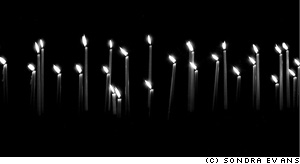 Minimalism is one of those concepts that’s difficult to wrap your head around – In one way, it can be described as just keeping it simple, but there’s a lot more to taking a good minimalist photograph.
Minimalism is one of those concepts that’s difficult to wrap your head around – In one way, it can be described as just keeping it simple, but there’s a lot more to taking a good minimalist photograph.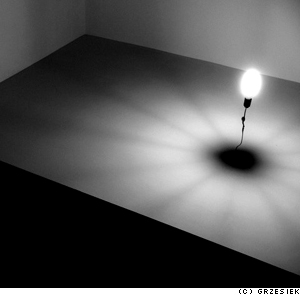 The minimalist movement started in the late 1960s, which sort of makes sense: I’m all for the music of the era, but tie-dye would do my fucking nut – no wonder people were striving for simplicity. As a stepping stone to post-modernism, minimalism works very well when combined with surrealism – and that’s where Grzesiek’s photograph comes in…
The minimalist movement started in the late 1960s, which sort of makes sense: I’m all for the music of the era, but tie-dye would do my fucking nut – no wonder people were striving for simplicity. As a stepping stone to post-modernism, minimalism works very well when combined with surrealism – and that’s where Grzesiek’s photograph comes in…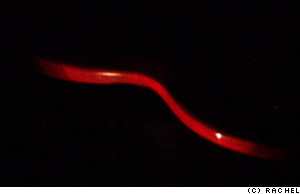 To me, minimalism is all about doing creative things with lighting: by being selective about what you light and how you have a fantastic opportunity to pick out details from a scene.
To me, minimalism is all about doing creative things with lighting: by being selective about what you light and how you have a fantastic opportunity to pick out details from a scene. Rather than making what you’ve carefully lit the center of the focus of the image, you’re essentially drawing the onlooker’s attention on what isn’t there – check out the image to the right.
Rather than making what you’ve carefully lit the center of the focus of the image, you’re essentially drawing the onlooker’s attention on what isn’t there – check out the image to the right.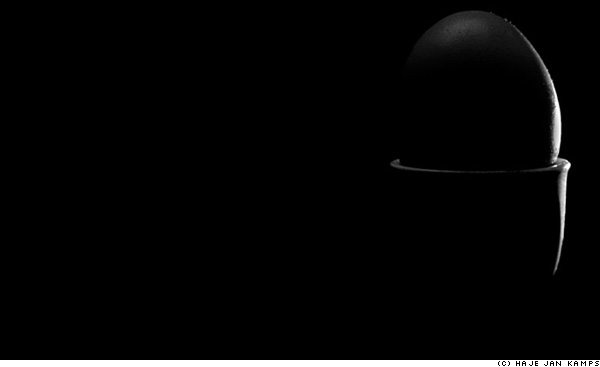
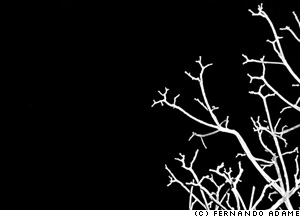 The egg-in-eggcup is an odd one as well, because it conforms quite strongly to the
The egg-in-eggcup is an odd one as well, because it conforms quite strongly to the 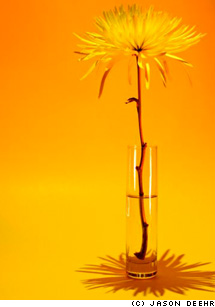 Colour in minimalism
Colour in minimalism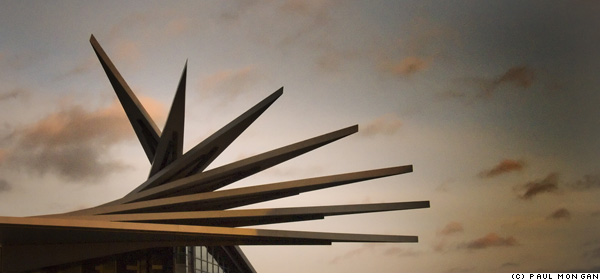
 I was torn as to whether the photo can be labelled as ‘minimalist’ or not – but similarly, it’s easy to see how the very same scene could be photographed at a different time of day, for a much stronger impact.
I was torn as to whether the photo can be labelled as ‘minimalist’ or not – but similarly, it’s easy to see how the very same scene could be photographed at a different time of day, for a much stronger impact.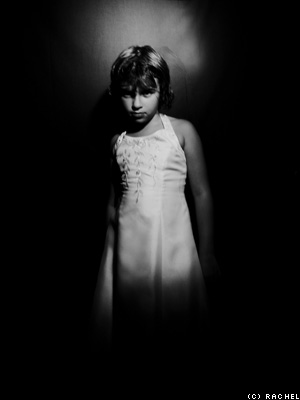 Obviously, there’s nothing to stop you from including people in your adventures in minimalism either – It’s just far more difficult.
Obviously, there’s nothing to stop you from including people in your adventures in minimalism either – It’s just far more difficult. Rachel’s experiments in keeping portraiture simple, however are particularly effective. The style of the image on the right remind me of the work of the amazing Katie Cooke (who runs the
Rachel’s experiments in keeping portraiture simple, however are particularly effective. The style of the image on the right remind me of the work of the amazing Katie Cooke (who runs the 



 The simplest product Moo does is Moo minicards. It’s like business cards, but with a difference: Upload up to 100 pictures, or let Moo take the photos directly from your Flickr stream, and you get up to 100 different mini business cards.
The simplest product Moo does is Moo minicards. It’s like business cards, but with a difference: Upload up to 100 pictures, or let Moo take the photos directly from your Flickr stream, and you get up to 100 different mini business cards. And that’s where the greatness of Moo cards come in. The first time someone gets a Moo minicard in their hands, the response is, invariably, Ooh, wow, that’s superb! Then, they usually run off to get their own Moo cards printed. Then, something fun happens: The second time someone gets a Moo card, they smile conspiratorially, and nod. And that’s where the fraternity of Moo begins.
And that’s where the greatness of Moo cards come in. The first time someone gets a Moo minicard in their hands, the response is, invariably, Ooh, wow, that’s superb! Then, they usually run off to get their own Moo cards printed. Then, something fun happens: The second time someone gets a Moo card, they smile conspiratorially, and nod. And that’s where the fraternity of Moo begins.





 A bit of further research shows that the vast majority of photographers shun the idea of killing insects to get photos of them – in
A bit of further research shows that the vast majority of photographers shun the idea of killing insects to get photos of them – in 

 It’s a much simpler solution than some others out there, and it looks damn fine, too. I caught up with James Pierce, who works for
It’s a much simpler solution than some others out there, and it looks damn fine, too. I caught up with James Pierce, who works for  “Artists and buyers from around the world are brought together online to interact, transact and enjoy art.”, he says, and claims that the most talented photographers have been able to make a large number of sales, too.
“Artists and buyers from around the world are brought together online to interact, transact and enjoy art.”, he says, and claims that the most talented photographers have been able to make a large number of sales, too. Eager to give me the marketing spiel of how RB works, James explains how it all hangs together: “RedBubble is free to sign up, and takes the risk out of selling your photos on-line – RedBubble only earns money when you succeed and sell your work. The photographer sets the retail price for everything they sell by choosing their percentage mark-up above the base price set by
Eager to give me the marketing spiel of how RB works, James explains how it all hangs together: “RedBubble is free to sign up, and takes the risk out of selling your photos on-line – RedBubble only earns money when you succeed and sell your work. The photographer sets the retail price for everything they sell by choosing their percentage mark-up above the base price set by What’s this? A honourable art gallery / picture peddler? Surely not? Well, yeah, that’s how it works! With products available spanning everything from simple flat prints (from $15) via mounted prints (from $40) to gorgeous, framed prints (from $80), there’s something for everybody!
What’s this? A honourable art gallery / picture peddler? Surely not? Well, yeah, that’s how it works! With products available spanning everything from simple flat prints (from $15) via mounted prints (from $40) to gorgeous, framed prints (from $80), there’s something for everybody!
 Instead, at the very least use a c-shell case (they are light-weight and sturdy, so they can be sent in the mail easily). Having said that, we also frequently work with a photographer who send in his DVD in a full-size DVD case (like the ones films come in) and prints off two of the best photos on the front and back cover of the DVD. It probably takes him 3 minutes – if that – but we never lose his DVDs in the mail, and it allows us to see at a glance what is inside. It sounds mundane, but we love the guy for it – why not be remembered by the arts people as someone who does everything they can to be on their side?
Instead, at the very least use a c-shell case (they are light-weight and sturdy, so they can be sent in the mail easily). Having said that, we also frequently work with a photographer who send in his DVD in a full-size DVD case (like the ones films come in) and prints off two of the best photos on the front and back cover of the DVD. It probably takes him 3 minutes – if that – but we never lose his DVDs in the mail, and it allows us to see at a glance what is inside. It sounds mundane, but we love the guy for it – why not be remembered by the arts people as someone who does everything they can to be on their side?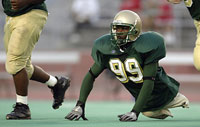

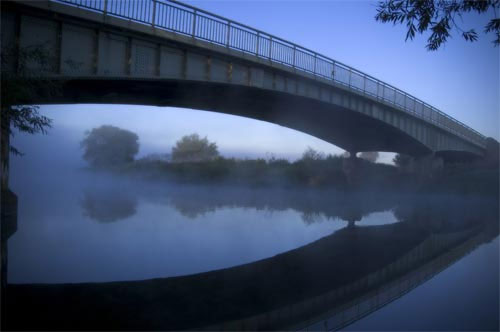
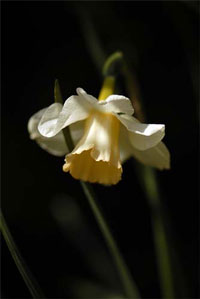 I’ve stumbled across Jason’s site,
I’ve stumbled across Jason’s site, 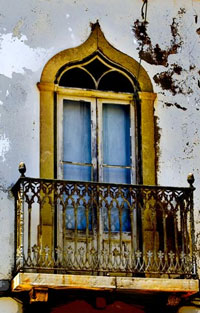 “Basically”, he says, “I launched it as a site to try and sell my own pictures as canvas and poster prints 5 months ago. Then I realised that there are so many really good photographers out there, completely unknown, yet they have no idea about the internet or how to create a website to sell their work and earn some extra cash.”
“Basically”, he says, “I launched it as a site to try and sell my own pictures as canvas and poster prints 5 months ago. Then I realised that there are so many really good photographers out there, completely unknown, yet they have no idea about the internet or how to create a website to sell their work and earn some extra cash.”
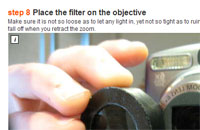
 The instructable to
The instructable to